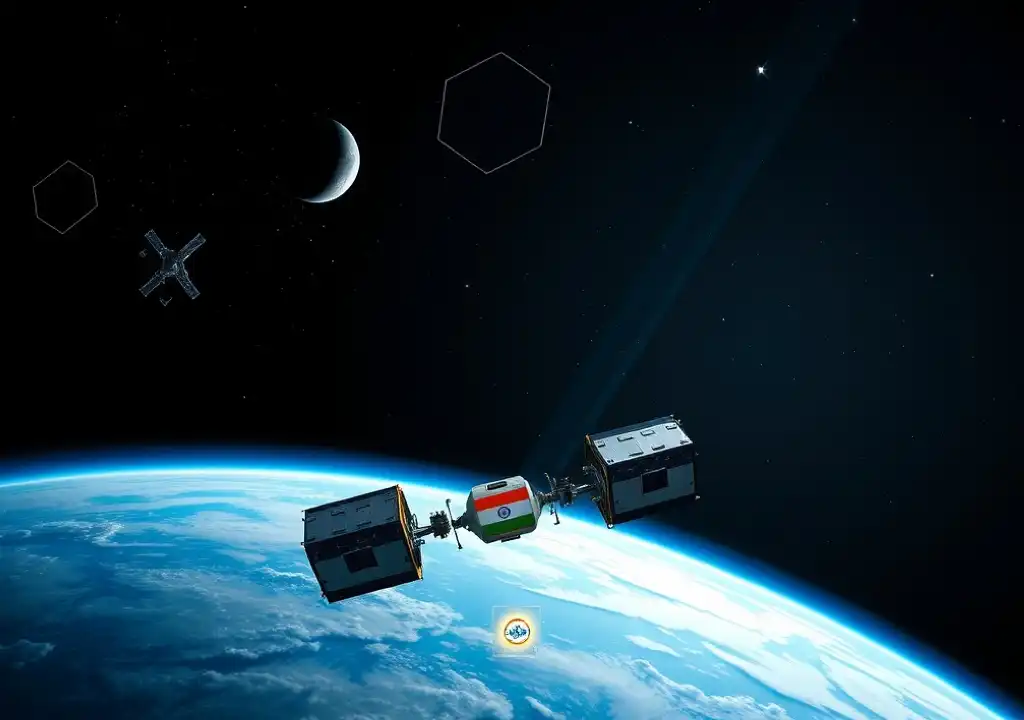India successfully carried out a historic space docking mission on Thursday, marking a significant achievement in its space exploration journey. India now joins a select group of nations, including the US, Russia, and China, in executing this complex technological feat. The docking process allows separate satellites to work together, maximizing efficiency by sharing resources and coordinating tasks that would be impossible for a single spacecraft to carry.
The mission, known as Space Docking Experiment (SpaDeX), was launched on December 30 from the Satish Dhawan Space Centre in Andhra Pradesh. It carried two satellites, Chaser and Target, which each weighed around 220kg (485lbs). After their separation in space, they were positioned 470km (292 miles) above Earth. Initially placed 20km (12 miles) apart, they executed a series of maneuvers before successfully docking on Thursday, earlier than the initially planned January 7 date. The Indian Space Research Organisation (ISRO) delayed the docking to address discrepancies in the drift between the satellites.
Prime Minister Narendra Modi congratulated ISRO on the milestone, calling it a “significant stepping stone” for India’s future space missions. The docking is considered crucial for India’s space ambitions, as it enables upcoming missions such as the building of India’s first space station and crewed missions to the moon and Venus. Docking technology will be key in assembling structures in space, such as the space station, and conducting in-orbit refueling and infrastructure assembly.
Astrophysicist Somak Raychaudhury praised ISRO for advancing its capabilities, noting that docking is a crucial next step following India’s success in launching and landing missions. The upcoming Chandrayaan-4 mission, for instance, will require docking in space to combine parts before landing on the moon to collect lunar samples. These advancements could also open new opportunities for offering space services to other nations.
The SpaDeX mission also included two dozen experiments from private sector entities, including space-tech startups and academic institutions, marking a step toward greater collaboration in India’s space ecosystem. Pawan Goenka, chairman of India’s space regulatory body, noted that this initiative reduces entry barriers for private companies and fosters innovation.
Although funding for India’s private space sector has seen a decline, government investment has surged following the success of Chandrayaan-3 and the Aditya-L1 solar mission. In 2024, the government allocated a record 10 billion rupees ($116m) to support future space projects, although experts argue this is still modest compared to the budgets of other space-faring nations.
India’s space missions have been characterized by frugality, with ISRO known for achieving remarkable feats on a limited budget. Mylswamy Annadurai, who led India’s Chandrayaan-1 mission, recalled the creative solutions the team employed to overcome budget constraints. While some critics focus on the cost-effectiveness of ISRO’s missions, experts like Raychaudhury suggest that innovation, rather than frugality, should be the primary focus as India progresses further in space exploration.
By adopting a pragmatic approach, ISRO continues to push boundaries in space technology while fostering a collaborative ecosystem that includes both public and private players, making India a rising force in global space exploration.

